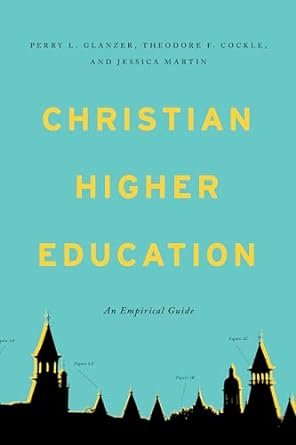Christian Higher Education: An Empirical Guide
Glanzer, Perry L., Theodore F. Cockle, and Jessica Martin. Christian Higher Education: An Empirical Guide. Abilene, TX: Abilene Christian University Press, 2023. Pp. 201. $22.99.
The first thing readers of Integration need to know is that everything Perry Glanzer writes is worth reading. Glanzer is arguably the most thoughtful scholar of Christian higher education writing today. He is professor of educational foundations at Baylor University, where he also serves as a resident scholar for Baylor University’s Institute for Studies of Religion. Glanzer has authored or edited over a dozen books and is editor-in-chief of the widely regarded Christian Scholar’s Review. In Christian Higher Education: An Empirical Guide, Glanzer collaborates with his Baylor colleagues Theodore Cockle and Jessica Martin to help parents, students, prospective faculty, and other interested parties navigate the landscape of Christian higher education.
The book’s premise is simple enough: there is no uniform understanding of what it means to be a Christian school. The authors evaluate the strengths and weaknesses of past attempts to interpret the diversity of Christian institutions. They then commend their indexing tool, the Operationalizing Christian Identity Guide (OCIG). The purpose of the OCIG is “to identify the major ways that Christian colleges and universities use their Christian identity to make mission, marketing, membership, curricular, cocurricular, and other administrative decisions” (13).
The OCIG uses eleven criteria to rate the degree to which institutions are Christian:
Mission
First-Page Rhetoric
“About Us” Rhetoric
Membership Requirements
Vice President for Mission or Chaplain in the President’s Executive Cabinet or Leadership Team
Specific Christian Academic Department (not a religion department)
Required Christian Bible/Theology Classes
Explicitly Christian Centers of Institutes
Chapel/Mass
Only Christian Student Groups
Code of Conduct Reasoning
The authors offer three important caveats (26–27). First, the OCIG does not measure religious beliefs, belonging, or behavior among a school’s various stakeholders. Second, the scale rates administrative decisions on their face rather than considering the degree to which religious reasoning factored into those decisions. Finally, and importantly, they concede that high scores alone do not necessarily mean that an institution is robustly Christian.
Most of the book examines how the 665 Christian schools the authors studied rate on the OCIG scale. These schools are in seven categories: mainline Protestant schools, historically black colleges and universities, Catholic institutions, evangelical schools in multidenominational coalitions (including IACE), independent low church Protestant institutions, the one Eastern Orthodox school, and Canadian colleges and universities. The authors also devote a chapter to Christian Study Centers, which represent a growing (and welcome) trend at non-sectarian or secularized institutions.
As with any ratings system for colleges and universities, administrators will almost certainly quibble about where their schools are ranked. The perception of a school’s Christian identity can be a high stakes proposition — especially as understood by prospective students, parents, and donors. I easily envision a scenario where marketing offices are rethinking their websites, student affairs offices are revising their handbooks, and religion departments are renaming themselves to achieve a higher rating that better aligns with their institutional self-perception of their Christian identity (or at least the perception they want external stakeholders to have of the school).
I want to push back on two of the OCIG’s criteria and offer an additional caveat about the value of this measure. First, I am not persuaded that the presence or absence of faith requirements for students are an adequate gauge of an institution’s Christian identity. I have no objection to the assumption that so-called covenant schools that require all students to be professing believers have a deep sense of Christian identity. They clearly do! But many institutions, including my current university and another university where I worked previously, do not require all students to be Christians precisely because evangelism is part of their institutional mission. We want unbelieving students in our community—and we want as many of them as possible to come to faith in Christ during their years with us.
Second, I have a philosophical objection to the assumption that schools that have a vice president of mission or chaplain on the senior leadership team are more Christian than those that do not. Does it really indicate that a school is in some way less Christian than others if a chaplain reports to the provost or the vice president of student life? More important, if the president and chief academic officer are doing their respective jobs, does a school need a vice president of mission? I am a former provost. In that role, a significant part of my job was advancing and protecting the institution’s Christian mission in all matters related to academics. I took this stewardship seriously, under the leadership of our chief mission officer: the president.
Finally, an important caveat that I suspect the authors would affirm: the OCIG’s usefulness is enhanced significantly when it is engaged from a standpoint of clear theological convictions. Their aim is to be descriptive. But moving to prescription, I will not concede that a school aligned with an ecclesial tradition that holds to heterodox doctrine can be more Christian than a school that is more consistently orthodox. We may disagree about where specific doctrinal lines are drawn, of course. But we both likely draw lines somewhere. For this reason, it is important that we apply our theological grids to the OCIG. For example, as I help my teenaged daughter consider various options for college, I want to know specifically how the Protestant evangelical and low church schools rate on the OCIG, since those schools align more closely with my theological convictions. I then want to consider additional factors about the school’s confessional commitments, institutional priorities, and strategy for campus ministry and student engagement.
Please do not interpret my criticisms as a rejection of the important work Glanzer and his colleagues have done. Christian Higher Education is a very helpful book that should encourage a conversation about a reality we all know to be true: claiming a Christian identity means different things in different institutions. My criticisms are real but friendly. Every administrator needs to read this book, leadership teams need to think together about its implications for their institutions, and prospective students and their parents need to be made aware of the OCIG. My hope is that more colleges and universities will pursue greater Christian faithfulness because this book exists.
Nathan A. Finn
Professor of Faith and Culture, Executive Director of the Institute for Transformational Leadership | North Greenville University

